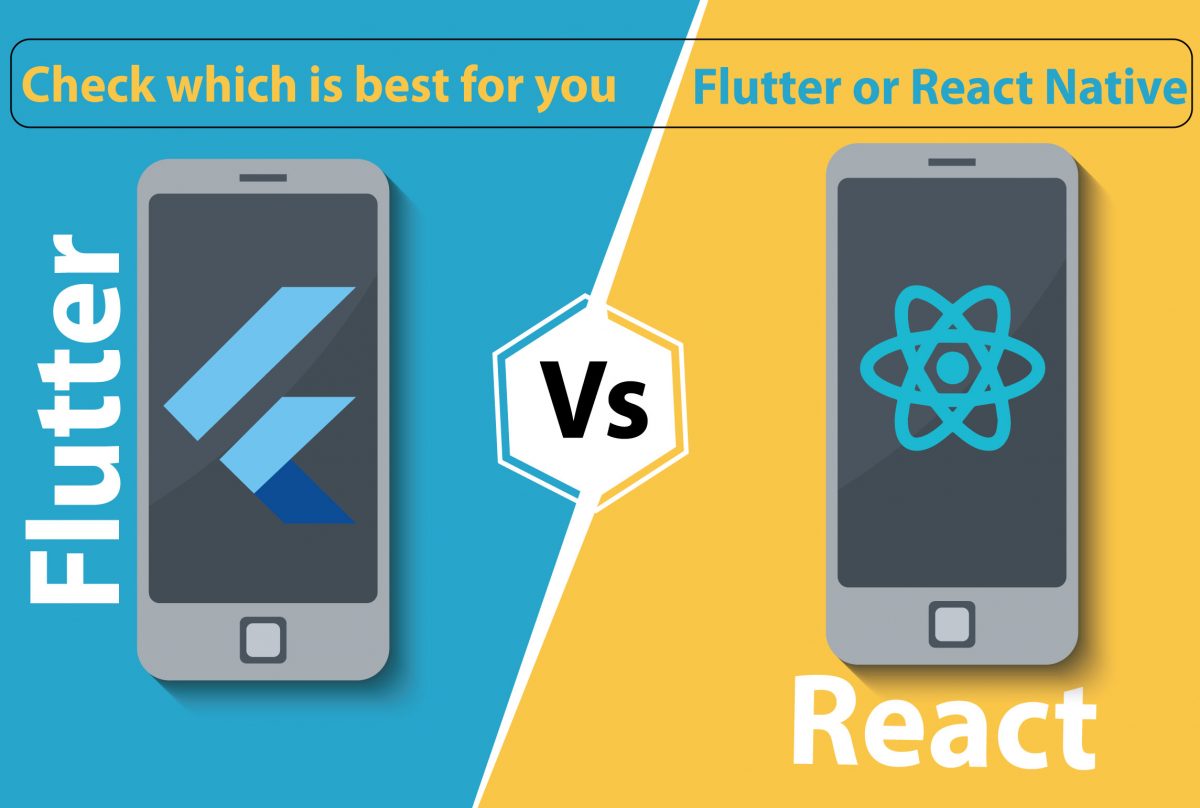About Us
Contact Info
- A-5 SSB Nagar, Swej Farm Sodala, Jaipur, India -302019
- +91-96497-77720
- info@lytechx.com
Check which is Best for you Flutter or React Native
- Home
- Check which is Best for you Flutter or React Native

What is Flutter?
It is an open-source system that capacities with a language called Dart made by Google. It is generally addressed as an upgraded UI tool compartment that is utilized to construct cross-stage applications with a solitary codebase. It gives availability to create expressive and adaptable UI with local execution. Furthermore, it is upheld and contributed by a group of Google designers and the whole ripple local area. You can go for other services like Ecommerce Development.
Use instances of Flutter
• MVP portable applications
• Applications with material plan
• Applications that capacity with OS-level elements
• Progressed OS modules with straightforward rationale
• Elite execution applications with Skia delivering motor
• Adaptable UI with significant level gadgets
• Reactivate applications with tremendous information reconciliation
What is React Native?
Respond Native is a well-known open-source system that sudden spikes in demand for JavaScript. It fundamentally centers around the local delivery of utilizations that is significantly viable with Android and iOS. Respond Native is composed of a mix of XML – Esque markup and JavaScript which is otherwise called JSX. It is supported by the online entertainment goliath Facebook, with north of 50 devoted engineers chipping away at the structure as of now.
Use instances of React Native
• Basic cross-stage applications
• Speedy model applications
• Applications with worked on UI
• Applications that look almost local with responsive UX utilizing FlexBox
• Applications with reusable parts
• Applications that work with simultaneous APIs
What well-known applications are made with Flutter?
• Google Ads
• Tencent
• Alibaba
• eBay
• BMW
What famous applications are made with React Native?
• Facebook
• Walmart
• Bloomberg
• Instagram
• SoundCloud
• Wix
Shudder and React Native benefits and disservices
Experts of Flutter:
• hot-reloading: Stateful Hot Reloading highlight reflects changes promptly without losing the application state.
• Rich-gadgets: Provides rich gadgets that adhere to the rules of Cupertino (iOS) and Material Design (Android).
• Consistent combination: Re-composing code isn’t required as it effectively incorporates Java for Android and Swift or Objective C for iOS.
• Fast transportation: Offers speedy emphasis cycles and saves fabricate time as testing is required uniquely for one single codebase.
• Code sharing: Codes can be composed and shared across stages simpler and quicker, which makes it ideal for MVP improvement.
Cons of Flutter:
• Instruments and Plugins: Libraries and apparatuses are noteworthy, yet it’s not generally so rich as React Native.
• UI: Vector designs and liveliness support have issues in delivering modules on schedule.
• Working stage: Not viable to create applications for tv OS, Android Auto, CarPlay, or watch OS.
• Refreshes: Cannot in a split second drive fixes and updates into applications without going through the standard delivery processes.
Aces of React Native
• Local delivering: Uses have the stage to deliver APIs without the requirement for HTML or CSS markup locally.
• Execution: Translates the markup of an application to impersonate bona fide UI components but keeps up with elite execution.
• Environment: Leverages rich biological system and UI libraries to naturally re-render application appearance with each state change.
• Troubleshooting: Provides availability to smart investigating instruments and blunder revealing.
• Hot-reloading: Allows hot reloading to add new codes straightforwardly into a live application.
Cons of React Native
• UI: Native delivering of APIs may not help specific local UI components, which might make the UI look somewhat off.
• Apparatuses and Plugins: Third-party libraries that can be utilized for better execution may frequently end up being obsolete.
• Execution: Does not help equal stringing and multi-handling, bringing about sluggish execution.
• Troubleshooting: Chrome debugger may be badly arranged to alter and assess codes, and UI components appropriately.
How truly does Flutter hang out with regards to execution?
Ripple application is more performant when contrasted with React Native. It doesn’t need a scaffold to convey between the local modules because of the default accessibility of local parts. The exhibition test demonstrated that the “hi world” application generally performed at 60 FPS, and the time taken to deliver each edge doesn’t take more time than 16 milliseconds. The number of edges that got dropped was less. As referenced, Flutter utilizes the Skia designs library, which permits the UI to be redrawn each time with each adjustment of the application view. No big surprise, Flutter can perform effectively even at 60 FPS.
How does React Native hang out about execution?
Respond Native has a lower execution contrasted with Flutter. This is a direct result of the JavaScript span that is utilized to impart between local modules. For every stretch, the quantity of casings that got dropped in React Native’s “hi world” application is a lot higher than Flutter. Sometimes, the application took more time than 16 milliseconds to deliver the program making the application falter. You can work on your application’s exhibition by utilizing outsider libraries like Proguard that further improves bytecodes. Likewise, components like Slowlog assist in setting execution clocks that with canning help to follow execution issues and determine them. You can also go for Lytechx Digital Pvt Ltd, it’s the best web development company in Jaipur. and you can also check other blogs like The best alternatives to the app store for iOS users in 2022.
